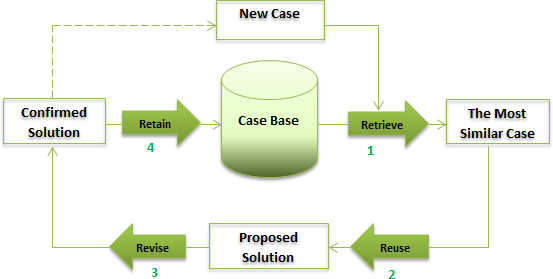Drilling oil and gas wells can sometimes encounter a common issue called the drill pipe twist off. This problem can have a direct impact on the overall well cost and duration of the drilling process. In this article, we will explore the primary causes of this problem and discuss ways to prevent it.
What Is Twisting Off In Drilling?
Twist off is a parting of the drill string caused by metal fatigue or pipe washout (Figure 1). If the drill pipe (API drill pipe specifications) twists off, it twists along its vertical axis. As a result, the fluid cycle will stop, exposing the drilling bit to heat (i.e., no cooling + no lubrication). Twist off will also eliminate the nozzle fluid pressure, which supports the drilling operation. It can lead to a drill pipe fatigue failure (Figure 2). This typically happens when there is a stuck pipe problem (Mechanical Stuck) in the lower sections of the pipe.


Drill Pipe Twist Off Indicators
There are early symptoms of twist-off. Such as the torque indication. The higher the torque deflection during the drilling operation, the more likely it is to get twist-off. Therefore, the driller should be aware of the situation.
The pipe often separates in a helical break, long tear, or split. The surface signs of a twist-off include
- Loss of drillstring weight.
- Lack of penetration.
- Reduced pump pressure.
- Increased pump speed.
- Reduced drilling torque.
- Increased rotary speed.
Root Causes
Drill pipe failure can be attributed to various reasons, with one of the most common being twist-off. This happens when the torque-induced shearing stress exceeds the pipe’s ultimate shear stress. Generally, twist-off occurs in directional and horizontal wells, where the torque is more than 80 kIb f-ft.
Ideally, drilling twist-off usually results from not moving the whole pipe at the same rotation speed. It is also the result of the following:
- Rough pipe handling.
- Faulty drill string.
- Stress reversals are in a sharply deviated hole drilling with a drill pipe in compression.
- Poorly stabilized drill collars scarring by tong dies.
- Other damage creates weak spots where cracks can form and enlarge under the constant bending and torque stresses of routine drilling.
- Improper makeup torque.
- Erosion caused by washout.
Drill Pipe Twist Off Mitigation Methods
When the rotary table accelerates or slows down during drilling, the bit and bottom hole assembly experience frictional torque (Torque in drilling) due to non-uniformity in the drilling motion. This leads to torsional drilling vibrations and irregular downhole rotations, which can cause drill string fatigue and eventual twist-off.
AST Tool
Are you tired of dealing with the annoying stick-slip vibrations during drilling? Tomax has got you covered with their innovative Anti Stick-slip Tool (AST). Using advanced computerized downhole sensors integrated into the BHA, the AST measures mechanical specific energy (MSE) and collects valuable vibration data to instantly suppress stick-slip vibrations. The result? A stable and safe drilling process with faster penetration rates (ROP) and smoother drilling even through the toughest underground formations. Say goodbye to frustrating drilling experiences and hello to the AST!

Harmonic Isolation (HI) Tool
Frank’s Harmonic Isolation (HI) tool is very effective in controlling vibrations during drilling operations. The HI Tool® can reduce the vibrational loads that come from drill bit dynamics (Figure 3). According to Larsen (2014), using HI tools can improve the rate of penetration (ROP) by up to 20%. The HI tool’s strength lies in its ability to minimize the dynamic interactions between the Bottom Hole Assembly (BHA) and the drill bit through the use of a flexible gear connection. This is different from the shock-absorbing mechanism used in AST. By decoupling the BHA and mud harmonics from the drill bit and drill string, the HI tool can render the drill bit insensitive to local vibrations.

CBR System
Kevin Brady (2011) developed a technique to prevent twist-off during drilling by collecting and analyzing real-time data to predict potential issues. The method is based on an automated case-based reasoning (CBR) system that can be updated continuously with new data and relies on drilling data from other wells or nearby regions until local data becomes available.

The system compares current drilling data with a library of past cases. Relevant case histories and best practices are presented to the drilling team when symptoms of problems are recognized. In addition, the team uses this information to better interpret evolving wellbore conditions and can assess the frequency of events to correlate with eventual failure.
The software was tested using data from an onshore well in Saudi Arabia that had twist-off events. The drilling data was replayed to validate the system response and ensure calibration. This action trained the software with this data and applied it to a gas well in northern Louisiana, which had two twist-off events.
The Louisiana wells underwent a blind test using the software without any adjustment. No data was provided to the test personnel. Instead, the system replayed historical Louisiana data via a WITSML data stream. The software accurately identified both twist-off events before they happened.
Torque, stalling, and stick-slip were identified as critical parameters leading to twist-off events. Stick-slip was found to be less important than other indicators in tested cases. However, it needs confirmation if this conclusion is site-specific.